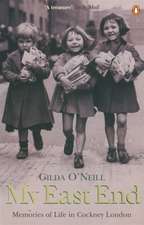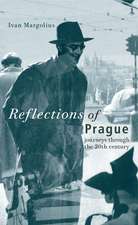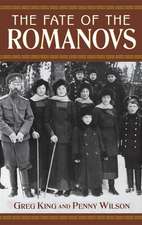Death and Conversion in the Andes – Lima and Cuzco, 1532–1670
Autor Gabriela Ramosen Limba Engleză Paperback – 29 apr 2010
When the Spanish invaded the Inca empire in 1532, the cult of the ancestors was an essential feature of pre-Columbian religion throughout the Andes. The dead influenced politics, protected the living, symbolized the past, and legitimized claims over the land their descendants occupied, while the living honored the presence of the dead in numerous aspects of daily life. A central purpose of the Spanish missionary endeavor was to suppress the Andean cult of the ancestors and force the indigenous people to adopt their Catholic, legal, and cultural views concerning death. In her book, Gabriela Ramos reveals the extent to which Christianizing death was essential for the conversion of the indigenous population to Catholicism.
Ramos argues that understanding the relation between death and conversion in the Andes involves not only considering the obvious attempts to destroy the cult of the dead, but also investigating a range of policies and strategies whose application demanded continuous negotiation between Spaniards and Andeans. Drawing fromhistorical, archaeological, and anthropological research and a wealth of original archival materials, especially the last wills and testaments of indigenous Andeans, Ramos looks at the Christianization of death as it affected the lives of inhabitants of two principal cities of the Peruvian viceroyalty: Lima, the new capital founded on the Pacific coast by the Spanish, and Cuzco, the old capital of the Incas in the Andean highlands. Her study of the wills in particular demonstrates the strategies that Andeans devised to submit to Spanish law and Christian doctrine, preserve bonds of kinship, and cement their place in colonial society.
"Rapid and widespread death decimated the descendants of the Inca Empire, but the mere number of the dead does not tell the story. Rather, Ramos brilliantly demonstrates that, beginning with the execution of Atahualpa, death and the dead were one of the great colonial sites of ongoing contestation about both the here and now and the hereafter. In an exquisitely researched study, Ramos traces the shift from pre-Columbian to colonial Andean funerary rituals and the differing ways that they became the center of how 'Andeans and Europeans communicated and exchanged their visions of power and the sacred,' in a true dance of death." --Thomas B. F. Cummins, Harvard University
"Death and Conversion in the Andesis a highly innovative study that looks at the conquest period in a new light. By analyzing how the conception of death and death rituals changed during the early colonial period, Gabriela Ramos is able to gain many new insights into how the conquest modified indigenous beliefs. For those interested in ethnohistory and the effects of colonialism in Spanish America, this is a must read." --Erick D. Langer, Georgetown University
Ramos argues that understanding the relation between death and conversion in the Andes involves not only considering the obvious attempts to destroy the cult of the dead, but also investigating a range of policies and strategies whose application demanded continuous negotiation between Spaniards and Andeans. Drawing fromhistorical, archaeological, and anthropological research and a wealth of original archival materials, especially the last wills and testaments of indigenous Andeans, Ramos looks at the Christianization of death as it affected the lives of inhabitants of two principal cities of the Peruvian viceroyalty: Lima, the new capital founded on the Pacific coast by the Spanish, and Cuzco, the old capital of the Incas in the Andean highlands. Her study of the wills in particular demonstrates the strategies that Andeans devised to submit to Spanish law and Christian doctrine, preserve bonds of kinship, and cement their place in colonial society.
"Rapid and widespread death decimated the descendants of the Inca Empire, but the mere number of the dead does not tell the story. Rather, Ramos brilliantly demonstrates that, beginning with the execution of Atahualpa, death and the dead were one of the great colonial sites of ongoing contestation about both the here and now and the hereafter. In an exquisitely researched study, Ramos traces the shift from pre-Columbian to colonial Andean funerary rituals and the differing ways that they became the center of how 'Andeans and Europeans communicated and exchanged their visions of power and the sacred,' in a true dance of death." --Thomas B. F. Cummins, Harvard University
"Death and Conversion in the Andesis a highly innovative study that looks at the conquest period in a new light. By analyzing how the conception of death and death rituals changed during the early colonial period, Gabriela Ramos is able to gain many new insights into how the conquest modified indigenous beliefs. For those interested in ethnohistory and the effects of colonialism in Spanish America, this is a must read." --Erick D. Langer, Georgetown University
| Toate formatele și edițiile | Preț | Express |
|---|---|---|
| Paperback (1) | 282.45 lei 43-57 zile | |
| MR – University of Notre Dame Press – 29 apr 2010 | 282.45 lei 43-57 zile | |
| Hardback (1) | 697.65 lei 43-57 zile | |
| MR – University of Notre Dame Press – 14 aug 2022 | 697.65 lei 43-57 zile |
Preț: 282.45 lei
Nou
Puncte Express: 424
Preț estimativ în valută:
54.05€ • 56.58$ • 44.72£
54.05€ • 56.58$ • 44.72£
Carte tipărită la comandă
Livrare economică 07-21 aprilie
Preluare comenzi: 021 569.72.76
Specificații
ISBN-13: 9780268040284
ISBN-10: 0268040281
Pagini: 368
Ilustrații: 29 maps; 3 tables
Dimensiuni: 151 x 233 x 25 mm
Greutate: 0.55 kg
Ediția:1st Edition
Editura: MR – University of Notre Dame Press
ISBN-10: 0268040281
Pagini: 368
Ilustrații: 29 maps; 3 tables
Dimensiuni: 151 x 233 x 25 mm
Greutate: 0.55 kg
Ediția:1st Edition
Editura: MR – University of Notre Dame Press
Notă biografică
Gabriela Ramos is University Lecturer in Latin American History, University of Cambridge.












